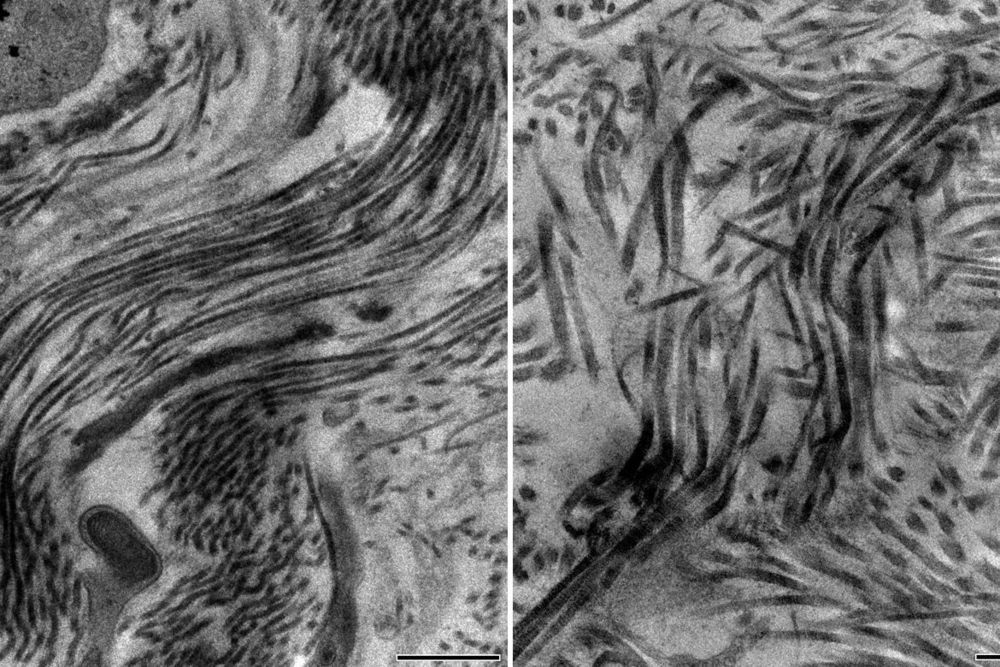Beijing says both sides taking effective measures to ease border tensions after skirmish that killed 20 Indian troops.




Very interesting.
New UCLA research conducted in mice could explain why some people suffer more extensive scarring than others after a heart attack. The study, published in the journal Cell, reveals that a protein known as type 5 collagen plays a critical role in regulating the size of scar tissue in the heart.
Once formed, heart scar tissue remains for life, reducing the heart’s ability to pump blood and adding strain to the remaining heart muscle. People who develop larger scars have a higher risk of heart rhythm problems, heart failure and sudden cardiac death.
“Two individuals with the same degree of heart attack can end up with different amounts of scar tissue,” said Dr. Arjun Deb, the study’s senior author and a member of Eli and Edythe Broad Center of Regenerative Medicine and Stem Cell Research at UCLA. “Given the clear correlation between scar size and survival rates, we set out to understand why some hearts scar more than others. If we can reduce this scarring, we can greatly improve survival.”

TuSimple, a trucking technology company, has announced a plan for the world’s first Autonomous Freight Network (AFN) – an ecosystem consisting of autonomous trucks, digital mapped routes, strategically placed terminals, and TuSimple Connect, a proprietary autonomous operations monitoring system.
Collectively, these components will work together to create the safest and most efficient way to bring self-driving trucks to market. Partnering with TuSimple in the launch of the Autonomous Freight Network are UPS, Penske Truck Leasing, U.S. Xpress (who operate one of the largest carrier fleets in the country) and McLane, a Berkshire Hathaway company and one of the largest supply chain services leaders in the United States.
“Our ultimate goal is to have a nationwide transportation network, consisting of mapped routes connecting hundreds of terminals to enable efficient, low-cost, long-haul autonomous freight operations,” said Cheng Lu, President of TuSimple. “By launching the AFN with our strategic partners, we will be able to quickly scale operations and expand autonomous shipping lanes to provide users access to autonomous capacity anywhere and 24/7 on-demand.”


Zero electrical resistance at room temperature? A material with this property, i.e. a room temperature superconductor, could revolutionize power distribution. But so far, the origin of superconductivity at high temperature is only incompletely understood. Scientists from Universität Hamburg and the Cluster of Excellence “CUI: Advanced Imaging of Matter” have succeeded in observing strong evidence of superfluidity in a central model system, a two-dimensional gas cloud for the first time. The scientists report on their experiments in the journal Science, which allow to investigate key issues of high-temperature superconductivity in a very well-controlled model system.
There are things that aren’t supposed to happen. For example, water cannot flow from one glass to another through the glass wall. Surprisingly, quantum mechanics allows this, provided the barrier between the two liquids is thin enough. Due to the quantum mechanical tunneling effect, particles can penetrate the barrier, even if the barrier is higher than the level of the liquids. Even more remarkably, this current can even flow when the level on both sides is the same or the current must flow slightly uphill. For this, however, the fluids on both sides must be superfluids, i.e. they must be able to flow around obstacles without friction.
This striking phenomenon was predicted by Brian Josephson during his doctoral thesis, and it is of such fundamental importance that he was awarded the Nobel Prize for it. The current is driven only by the wave nature of the superfluids and can, among other things, ensure that the superfluid begins to oscillate back and forth between the two sides—a phenomenon known as Josephson oscillations.


Layered van der Waals materials are of high interest for electronic and photonic applications, according to researchers at Penn State and SLAC National Accelerator Laboratory, in California, who provide new insights into the interactions of layered materials with laser and electron beams.
Two-dimensional van der Waals materials are composed of strongly bonded layers of molecules with weak bonding between the layers.
The researchers used a combination of ultrafast pulses of laser light that excite the atoms in a material lattice of gallium telluride, followed by exposing the lattice to an ultrafast pulse of an electron beam. This shows the lattice vibrations in real time using electron diffraction and could lead to a better understanding of these materials.
Text is backward. Clocks run counterclockwise. Cars drive on the wrong side of the road. Right hands become left hands.
Intrigued by how reflection changes images in subtle and not-so-subtle ways, a team of Cornell researchers used artificial intelligence to investigate what sets originals apart from their reflections. Their algorithms learned to pick up on unexpected clues such as hair parts, gaze direction and, surprisingly, beards – findings with implications for training machine learning models and detecting faked images.

Infertility is one of the most striking effects of aging. The impact of aging on females’ fertility is more severe and much better understood, but it also affects males. Male reproductive aging is less researched, but of those studies that do address it, most focus on sperm. However, ejaculate contains more than just sperm. Proteins in the seminal fluid are important for fertility, and in many animals, they have a dramatic effect on female physiology and behavior. Little is currently known about the impact of male aging on these proteins, and whether any changes contribute to poorer ejaculates in older males.
To resolve these questions, researchers at the University of Oxford’s Department of Zoology conducted experiments in a model organism, the fruit fly, Drosophila melanogaster. This species typically lives for less than five weeks, which means that researchers can very rapidly measure the impact of age on male fertility, and their sperm and seminal fluid proteins. This species is also highly amenable to genetic studies, which allowed the researchers to genetically manipulate male lifespan, to see how this impacted the decline in fertility with age.
Published this week in PNAS are their results which show that both sperm and seminal fluid protein quality and quantity decline with male age, making distinct contributions to declining reproductive performance in older males. However, the relative impacts on sperm and seminal fluid often differ, leading to mismatches between ejaculate components. Despite these differences, experimental extension of male lifespan improved overall ejaculate performance in later life, suggesting that such interventions can delay both male reproductive aging and death.